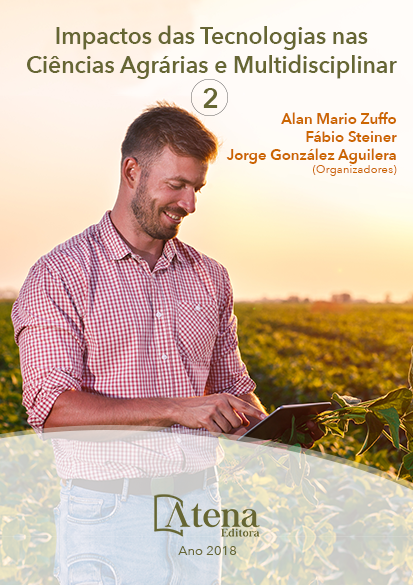
VIABILIDADE DE LACTOBACILLUS ACIDOPHILUS ATCC 4356 MICROENCAPSULADO ADICIONADO A IOGURTE BATIDO SABORIZADO COM POLPA DE MIRTILO (VACCINIUM spp)
Microrganismos probióticos vêm
sendo usados em produtos alimentícios devido
aos benefícios à saúde dos consumidores,
sendo os iogurtes e bebidas lácteas os principais
veículos. Entretanto, esses podem sofrer
fenômenos como pós-acidificação, prejudicando
a viabilidade celular. Assim, tecnologias de
proteção de probióticos mostram-se benéficas,
como a microencapsulação, sobretudo
quando o alimento possui natureza ácida ou
sofre acidificação. Nesse sentido, objetivouse
avaliar a viabilidade, ao longo do tempo,
da cepa probiótica Lactobacillus acidophilus
ATCC 4356 microencapsulado com xantana e
adicionado em iogurte batido saborizado com
polpa de mirtilo estabilizada com xantana.
Obteve-se o iogurte e o mesmo foi submetido
a quatro tratamentos, oriundos da combinação
de adicionar ou não polpa de mirtilo e adicionar
probiótico microencapsulado ou probiótico
na forma livre. Avaliou-se a viabilidade de
Lactobacillus acidophilus ATCC 4356 no 4º, 7º,
14º e 28º dia de armazenamento. Os iogurtes
com probiótico microencapsulado mantiveram constante o log da concentração do
probiótico durante o período de armazenamento; porém, no iogurte adicionado de
polpa de mirtilo, as contagens do probiótico foram estatisticamente menores em todos
os tempos analisados. Já nos tratamentos com células livres as contagens do probiótico
foram estatisticamente menores já no 4º dia e no 28º não continham mais células
viáveis. A presença da polpa não influenciou significativamente. Logo, a adição de
L. acidophilus ATCC 4356 microencapsulado com xantana permite a manutenção de
elevadas concentrações, suficientes para porção de 10g do produto ser considerada
probiótica, mesmo com a redução causada pela polpa de mirtilo.
VIABILIDADE DE LACTOBACILLUS ACIDOPHILUS ATCC 4356 MICROENCAPSULADO ADICIONADO A IOGURTE BATIDO SABORIZADO COM POLPA DE MIRTILO (VACCINIUM spp)
-
DOI: Atena
-
Palavras-chave: iogurte probiótico; polpa de mirtilo, xantana; spray drier, vida útil.
-
Keywords: probiotic yogurt; blueberry pulp; xanthan; spray drier; shelf life.
-
Abstract:
Probiotic microorganisms have been used in food products because of
the health benefits of consumers, with yogurts and dairy drinks being the main vehicles.
However, these can undergo phenomena such as post-acidification, impairing cell
viability. Like this, technologies of protection of probiotics are shown to be beneficial,
such as microencapsulation, especially when the food is acidic or suffers acidification.
In this sense, the objective was to evaluate the viability, over time, of the probiotic strain
Lactobacillus acidophilus ATCC 4356 microencapsulated with xanthan and added in
flavored yogurt flavored with blueberry pulp stabilized with xanthan. The yogurt was
obtained and the same was subjected to four treatments, from the combination of
adding or not blueberry pulp and adding microencapsulated probiotic or probiotic in the
free form. The viability of Lactobacillus acidophilus ATCC 4356 was evaluated at the
4th, 7th, 14th and 28th days of storage. Yogurts with microencapsulated probiotics kept
the log of the probiotic concentration constant during the storage period; however, in
the added blueberry pulp yogurt, the probiotic counts were statistically lower at all times
analyzed. In the free-cell treatments, the probiotic counts were statistically lower on the
4th day and on the 28th day they did not contain any more viable cells. The presence
of pulp did not influence significantly. Thus, the addition of L. acidophilus ATCC 4356
microencapsulated with xanthan allows the maintenance of high concentrations,
sufficient for a 10 g portion of the product to be considered probiotic, even with the
reduction caused by the blueberry pulp.
-
Número de páginas: 15
- Júlia Borin Fioravante


